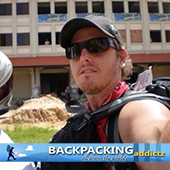The teardrop-shaped island of Sri Lanka is oddly labelled by the Chinese as the “land without sorrow”. The Democratic Socialist Republic of Sri Lanka is a small nation is one of the most desired countries for travel in the South Asia region. And while the fright of the civil war or the 2004 tsunami is not good publicity for the tourism industry, Serendib, as Persians called it and whence English takes “serendipity” from, is severely calm and serene in more ways than one, inland and on the seas.
After the disastrous and destructive Indian Ocean Tsunami of 2004 where 31,229 deaths were reported and around a million left homeless, Sri Lanka’s sweet and slow recovery accolades it as the “small miracle.” Europeans in the early days of world exploration thought they had discovered the “Garden of Eden”, but what has become of this Pearl of the Indian Ocean is the crown jewel of the spice trade. On the inside, the once-called Ceylon is peaceful and care-free, but around it, wars were waged by great empires in a quest to covet the rich island.
GEOGRAPHY & CLIMATE
Sri Lanka is a 65,610 km2 territory of mainly flat and rolling plains while mountainous in the central part to the south. Quite low that the island wonder has a highest altitude, the Pidurutalagala of 2,524 metres above the Indian Ocean, its lowest point, and as such, located at 7 00 N, 81 00 E and south of India, the country basks in a warm tropical monsoon climate moderated by ocean winds and moisture. The three corresponding seasons are southwest monsoons from June to October, wet northeast monsoon from December through March, and hot season from April to May. January has the coldest of days in the year, while April is extremely unbearable as the Sri Lankan sun glares like no other. There is no ideal time to be in Sri Lanka. It is all about where you are when you’re there. If one finds the urban jungle too hot for the liking and the air too dim and thin for breathing, heed the call of the countryside for better climate and air.
PEOPLE & CULTURE
In all ways, these factors work for the good of local and vacation life, for the people in Sri Lanka, the Sri Lankans, are a peaceful and simple unit of people, unit in the sense of being a nation amidst ethnic and religious disparity. Sri Lanka is constituted by a majority of Sinhalese, from Ceylonese of almost three-quarters of the population, followed by Sri Lankan Moors, Indian and Sri Lankan Tamil consecutively, and other immigrants.
The constitution of Sri Lanka attests to freedom of religion, but, in the main, the republic is a Buddhist country with almost 70% of the population following, mainly Sinhalese, but with a great proportion of Hindus (mostly Tamils), Muslims, and Christians. The language of the state is SINHALA used for the most part by all of the Sinhalese population and more, that is 75% of the Sri Lanka, although TAMIL is also a national language. ENGLISH is the de facto language for government and business affairs, and is spoken competently by a sizeable 10% of Sri Lanka.
FOOD & ATTRACTION
Nowhere else can a traveller see good ethnic and religious proportion than in the capital itself, Colombo basically because it’s got anything and everything. Although Colombo is the biggest and the busiest place one can go to in their island adventure, there are other relaxing options like a lazy trek to the ancient cities, a cool surf in the heat of the sun, a scuba dive, a snorkel, or a serene waterfront show of the sunset, all at once if preferred, where it is truly peaceful and free to explore. It is the ideal place to start and end a traveller’s Sri Lankan journey.
But should the equatorial sun, add the smothering diesel fogged air of Colombo slowly deteriorate your travel zest, delve into the world-class attractions countryside like rice valleys, mountain springs, forever falls, tea terraces, virgin rain forests, golden coastlines, the Elephant Rock, the Sigiriya Rock Fortress (Lion’s Rock), lost cities, stone temples, forest monasteries, and, really, the list goes on. These are but revelations to what the “small island, big trip” this enigmatic place is.
Then again, no travel can be perfection without a taste of the Sri Lankan cuisine. In these parts of the world, food is so good everything stops as if nothing bad can happen. Sri Lankan cuisine- and people think Indian cuisine. The food here is like the motherland itself in variety and heat. In truth, Sri Lankan food has an identity of its own, exceptionally magnificent visually and all otherwise, bar none. Rice, the staple, is the blank canvas to the art of colours and flavours effervescent on your typical Sri Lankan plate. Although spices used here are similar to south Indian cuisine, spices are used in whole and are turned to paste, instead of ground spices, that gives it that distinctive velvety marriage of spices to the food.
Rice with curry is most common dish which can be in vegetable or meat sorts served with scores of sides that create varieties of flavours in every bite. This modern Sri Lankan personality in food is one of tradition and fusion from the West (British, Dutch, and Portuguese) and the East (Moors, Malays, Arabs and Indians). Desserts here range from native cakes of coconut to a class that exudes western influences like crème caramel. I say desserts lay the sturdy groundwork for a good Sri Lankan food adventure. Sri Lankan gastronome is just so different from India, so different from what one expects.
To see Sri Lanka is to be in Sri Lanka even if it means riding along the same tracks the 2004 tsunami devoured. But as the train cuts right along the sea past areas and villages, montages flash like in an old 50’s film creating some distance from the everyday life that you see for a moment and is gone. Until you get off the train, then you would realise the reality of the previous scenes. Succinctly put, Sri Lanka’s main attraction is the people, the ones you meet here picking tea in the rain, fishing on poles Sri Lankan style, or cooking curry crab.
Josh Boorman
Editor-in-chief
Backpacking Addictz
Twitter: @backpackaddictz
Backpacking Addictz is a website set up by backpackers for the use of backpackers. On this site you will find a lot of very valuable backpacking information surrounding different destinations and countries from around the world. Also very helpful backpacking tips and travel advice on planning a budget travel and backpacking adventure. You will also find an enthusiastic and insightful backpacking blog which is regularly updated with new posts and article.
Backpacking Addictz Travel eGuides are a fantastic, cheap and easy way to get hold of a vast amount of backpacking information prior to setting off on your backpacking adventure.







Leave A Response